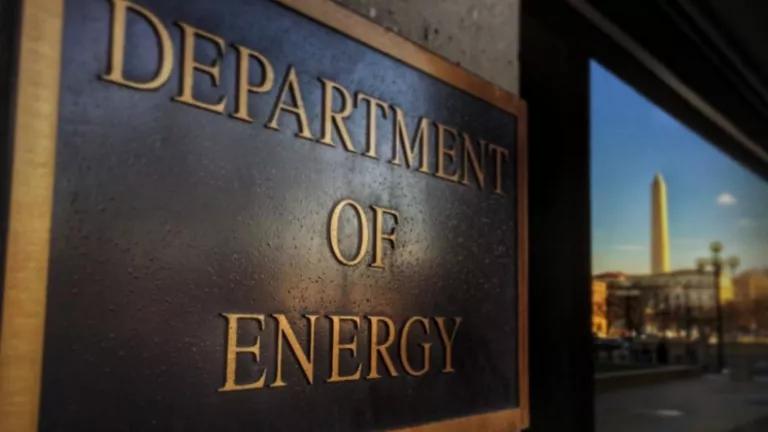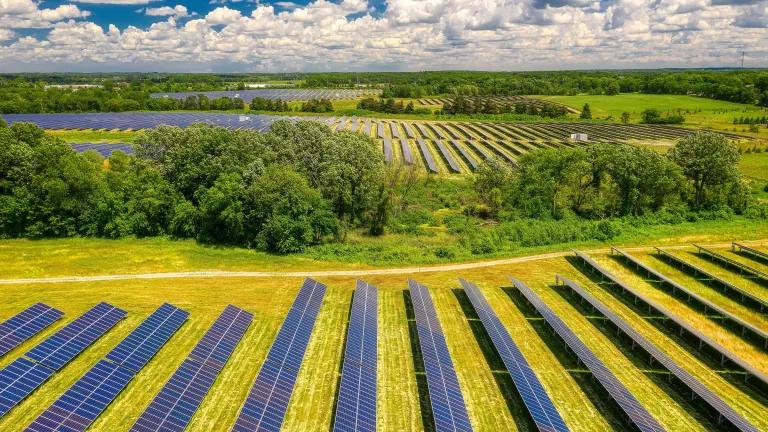Here's How to Bring Out the Best in Energy Efficiency
Energy efficiency policy needs to evolve. Here's how!

Energy efficiency is California’s priority to meet the energy needs of its residents while reducing utility bills and carbon emissions. But the most recent energy-saving goals set by the California Public Utilities Commission (CPUC) for energy efficiency programs are the lowest in a decade and only half of what they were in 2015—despite the state’s increasing carbon-reduction goals and commitment to serving people in under-resourced communities.
This cut in efficiency program goals and budgets are a reaction to what the CPUC views as low cost-effectiveness of these programs compared to purchasing power generated from such resources as solar, wind and gas. But the problem isn’t that they are under performing, it’s that we aren’t measuring their achievements correctly.
Instead, we need to view the value of energy efficiency programs based on how they meet our energy needs, environmental goals, and improve the well-being of utility customers. However, we value efficiency programs for only a fraction of these objectives—and incorrectly at that. If we don’t move beyond these outdated policies, California’s electric utilities will end up investing in more expensive and carbon-intensive ways to meet our energy needs.
Why Efficiency Programs Appear to Fall Short
Between 2010 and 2012, California’s utility energy efficiency incentive programs, such as lighting and appliance upgrade incentive programs, saved utility customers $3.3 billion and avoided 5.3 million tons of carbon pollution, equal to the tailpipe emissions from a million cars. From 2013 through 2015, these programs avoided even more carbon (7.1 million tons) and saved customers $3.1 billion, but failed to fulfill their energy-savings goals in a way that California’s regulators consider cost-effective. As a result, the CPUC, which regulates the state’s privately owned utilities serving more than 75 percent of Californians, instituted policies that reduce budgets for programs to help utility customers save money.
But treating the problem’s symptom, seemingly low cost-effectiveness, while ignoring its root-cause has the effect of reducing the benefits of energy efficiency for all Californians, ignoring its potential to slow the climate crisis, and missing opportunities to help improve customers’ health while decreasing their energy bills.
Energy efficiency continues to deliver a multitude of benefits to Californians but long-ignored structural issues in how the Commission and utilities develop, implement, and regulate these programs make it appear they aren’t as cost-effective as they once were.
Many of the biggest efficiency program targets over the past decades have seen so much success that there is less wasted energy left to save. Additionally, decreases in the prices of fossil gas and renewable energy have made it harder for efficiency programs to be a lower-cost alternative. Here’s why:
- Disconnect from Policy Objectives: Although efficiency offers multiple benefits, the CPUC only values efficiency for its ability to meet near-term customer energy needs. It does not include progress toward multiple and diverse policy objectives, such as equity-enhancing programs that prioritize lower-income customers to ensure their homes are more comfortable and efficient; research on and developing emerging efficient technology; workforce training to ensure best energy practices are applied by efficiency contractors, and better energy codes and standards. These are critical programs requiring substantial investment but may not produce energy savings for a few years.
- Undervaluing Efficiency: California’s cost-effectiveness policy is lopsided in that it counts all costs but only a fraction of their benefits. The costs include the money spent by the program administrator as well as that paid by the customer, but the equation only accounts for benefits accrued by the program administrator, ignoring such important benefits as improved comfort and increased health from well-insulated homes.
- Not Setting the Right Goals: Energy efficiency goals are set in terms of a general “how many savings can we achieve each year.” This outdated metric ignores the fact that there are some hours where saving energy is less valuable for utilities and society at large (e.g., when the sun shines and cheap clean solar energy is plentiful), and other hours when saving energy through efficiency is more valuable because it avoids polluting fossil fuel generation and the need to build more expensive electricity generation resources to meet customer demand. The energy-saving goals also don’t prioritize measures that save energy over a long period, like 15 years for a new air conditioner, over those of shorter duration even though long-term savings are of most value to California’s energy and environmental goals.
A Road-map for Better Energy Efficiency Policy
NRDC is recommending three ways to modernize the current energy efficiency approach within the next year:
Restructure Efficiency Portfolios: The first step of reform is to better align efficiency programs with the energy system and the policy objectives efficiency is expected to achieve. This can be done by cleaving each utility’s portfolio of efficiency programs into three buckets:
- Resource programs, which cut energy waste so planners can avoid more expensive sources of power to meet customer needs. Examples are incentives to weatherize homes and install high-efficiency appliances.
- Market transformation programs, which save energy by transforming products and practices used in the market (e.g., evolving the incandescent bulb to LEDs). It often takes years before these programs show quantifiable energy savings.
- Equity programs, which prioritize investment to help the most vulnerable customers upgrade their homes to reduce their energy burden, improve their health, and increase their well-being.
Each bucket should be valued and tracked in accordance with its objectives. NRDC’s paper “Restructuring Portfolios to Bring Out the Best in Energy Efficiency” explains how goals and budgets should be developed for each program type.
Develop Accurate Cost-Effectiveness Policy: Our paper “Designing Cost-Effectiveness Tests for Utility Demand Side Management Programs,” explains the principles for developing an accurate cost-effectiveness test that planners can apply to all energy resources (i.e., efficiency, renewable energy, demand response) to meet California’s energy system needs and policy goals in the least-cost way.
Using the Total Economic Value of Benefits: Instead of continuing to set goals in terms of an outdated metric—annual energy savings—our paper “Using the Total Economic Value of Benefits to Set Resource Energy Efficiency Goals” shows how to calculate and set goals in terms of the total energy and environmental value provided by the programs. This new metric can be used to set goals for all distributed energy resources (such as demand response, and rooftop solar) and allow regulators to design programs that go beyond energy efficiency and bundle multiple distributed energy resources together.
Energy efficiency has a unique role to play in California’s clean energy transition due to its ability to reduce utility bills, avoid carbon, and improve the well-being of all customers. But we need a new way to value it—and NRDC’s proposed changes will help us accomplish our clean energy and affordability goals.




